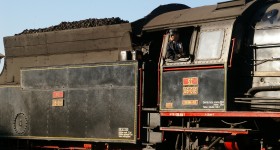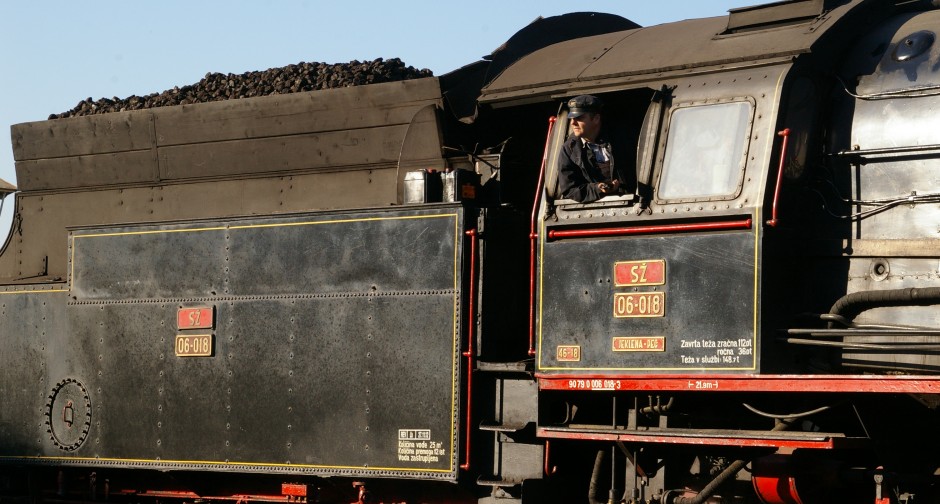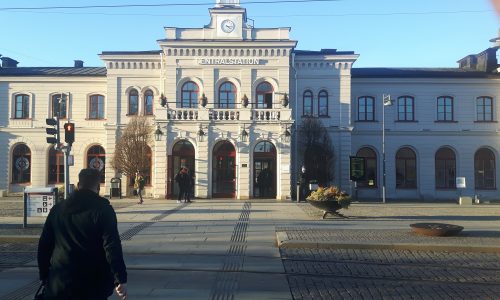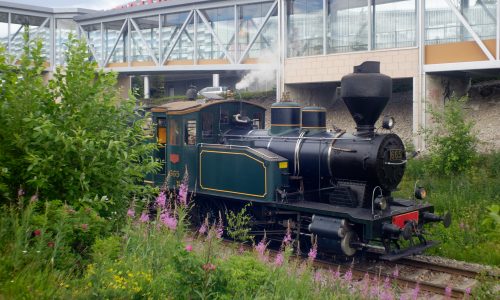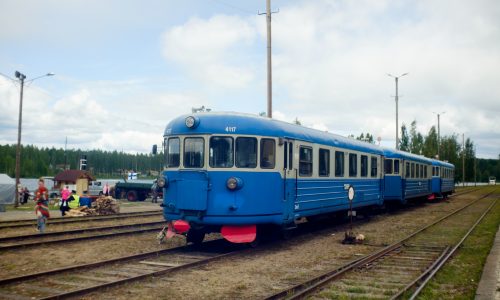Steam locomotive SŽ 06-018 – Making steam
The sound: Making steam in preparation for moving locomotive.
To start a locomotive: A valve in the steam dome is opened by moving the regulator handle. This allows steam in the boiler tubes to enter the superheater and then down the steam pipes to the steam chest. This distributes the steam via ports to the cylinders and then allows the used steam to be exhausted out once it has done its work. The exhaust is discharged via the smokebox and up through the chimney. The steam entering the cylinder forces the pistons to move though the expansion of the steam. The pistons are connected to the wheels by rods. As the pistons move, they force the rods to move which then turn the wheels.
In line with the concept of German standardised locomotives set out in 1920, Borsig designed in 1930 three types of modern standard locomotives for the Kingdom of SHS, for express, local passenger and freight trains. The class 06 was intended for passenger trains and was especially adapted to meet the characteristics of mountain lines and poor quality coal. However, due to its weight, the bridges on the main lines had to be reinforced. The class 06 was used almost until steam locomotives were abandoned in the mid-1970’s.
06-018 was constructed in the Borsig Works, Berlin in 1930 and is still operational as part of the Museum train of the Slovenian Railways.
Weight: 160t
Axle load: 18t
Length: 21.9m
Driving wheel diameter: 1600mm
Boiler pressure: 16 bar
Power: 1250 kW (1700 hp)
Maximum speed: 85km/h
Sound level: 70 dB
Sound recordist: Dušan Oblak
Photographer: Boris Brovinsky
Video recordist: Barbara Grilc
Specs:
Filesize:
Duration:
Channels:
11 MB
57 s
2 (Stereo)
Bit rate:
Bit depth:
Level:
1536 kb/s
16 bit
70 dB
Recorded on April 17, 2014
Railway Museum
Ljubljana, SLOVENIA
Creative Commons License

